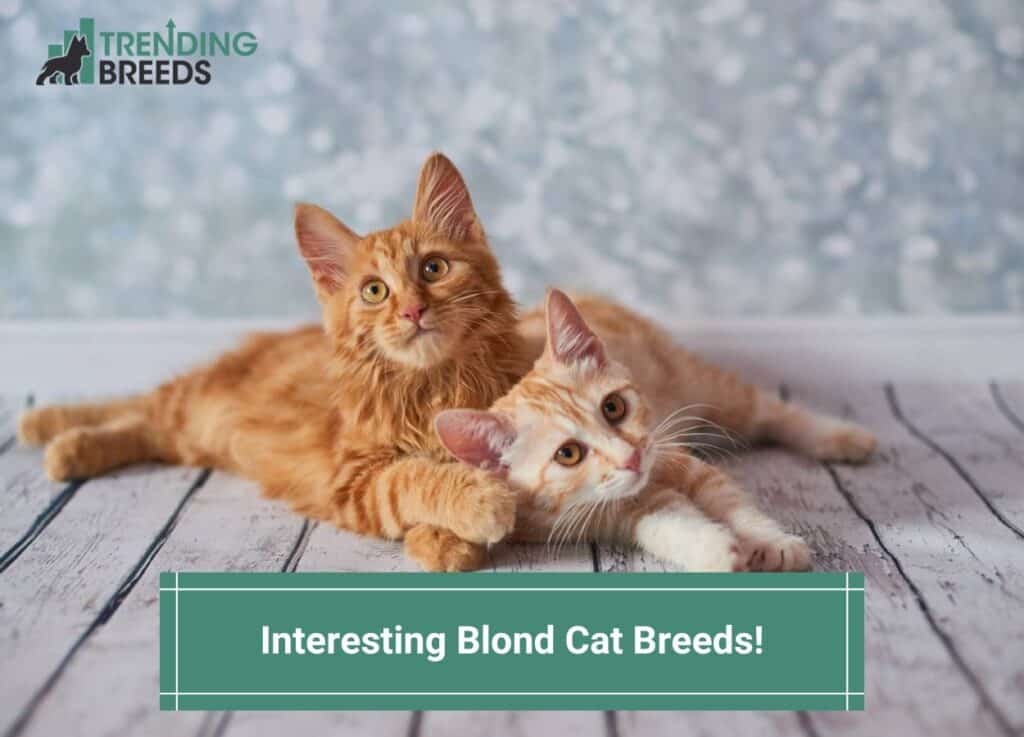
Are you looking for a blond-colored cat to join your household and unsure where to begin? Well, we’re here to assist you with interesting blond cat breeds. You must first remove the word “blonde” from your search parameters.
Blondes are referred to as “cream” in the context of cats, and numerous variations of cream are approved color varieties according to breed standards.
The American Bobtail, American Curl, American Shorthair, Birman, British Shorthair, Devon Rex, Japanese Bobtail, Maine Coon, and Manx are among the cat breeds that are naturally blond.
Here, we’ll discuss the various cat breeds that come in cream-colored variations and patterns and assist you in choosing the ideal “blond” breed for your household.
Before you scroll further down this guide, check out these other cat-related articles: Domestic Cats That Look Like Lynx and How To Put Your Cat on A Diet.
Table of Contents
15 Interesting Blond Cat Breeds
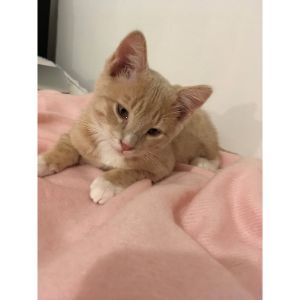
Following are some of the most interesting cat breeds found in blond color.
1. American Bobtail
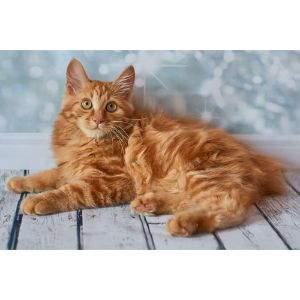
It wasn’t until the 1960s that the American Bobtail first appeared. The International Cat Association officially recognized them as a breed for the first time in 1989.
The Cat Fanciers Association granted them registration approval in 2000; by 2005, they had been granted provisional status.
Domestic cats‘ genetic abnormality caused their short, bobbed tail to develop. The breed’s striking, wild appearance and robust, athletic build result from both that.
These cats are renowned for making good lap cats since they are highly intelligent, lively, and adaptable. They attain adulthood between 2 and 3, maturing more slowly than most breeds.
They have numerous distinguishable coat color and pattern variations, including cream.
2. American Curl
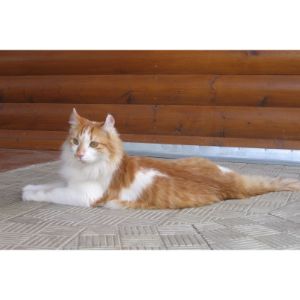
The American Curl began in June 1981 with a single black female named Shulamith in Lakewood, California.
Shulamith’s distinctively curled ears were the result of a rare genetic abnormality. The breed was established when she gave birth to a litter of kittens with similar curled ears.
The breed debuted in 1983 at a Cat Fanciers Association show in Palm Springs, California, but it wasn’t until 1986 that registration was authorized.
The American Curl is a devoted, affectionate, and down-to-earth breed. They are renowned for their flexibility and excellent behavior toward other animals. One of the breed’s accepted colors is cream.
3. American Shorthair
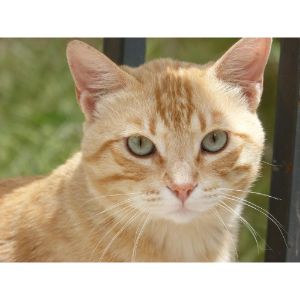
Before being changed in 1966, the American Shorthair was classified as the Domestic Shorthair. Before the nomenclature change, they were one of the original five breeds that the Cat Fancier’s Society registered in 1906.
The breed features dense fur in 80 colors and patterns, notably cream variants, and golden or green eyes.
These felines are often healthy, docile, and devoted to their owners. They are a charming breed with a steady temperament and a friendly demeanor toward strangers.
4. Birman
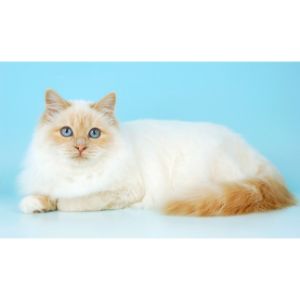
Although the origins of the Birman are unknown, it is believed that they began as a companion of the temple priest of northern Burma on the Hill of Lugh.
The Cat Club of France granted the Birman their first official recognition in 1925 after they made their way to France.
Later, in 1966 and 1967, the Governing Council of the Cat Fancy in England and the Cat Fanciers Association in the United States acknowledged them.
The Birman is a stunning pointed breed with four white socks and a medium to long silky coat.
They are available in a well-known cream variation. The breed is highly recognized for being energetic, inquisitive, and the nicest lap cats you will find, and it gets along well with other pets.
5. British Shorthair
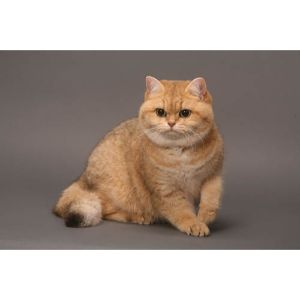
At 14, a British Shorthair cat won Best in Show in the first official cat show held at the Crystal Palace in London, England, in 1871.
The breed first appeared in the country during the turn of the 20th century. Even though after the First World War, it fell out of favor, its popularity has recently increased.
The International Cat Association and the Cat Fanciers Association both recognize this breed.
They are slightly more reserved than most breeds and have a fairly even temperament. For those who want a blond cat, you can locate them in the cream variations.
6. Devon Rex
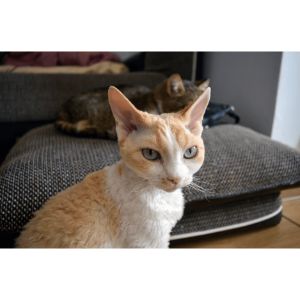
Because of a presumed accidental genetic mutation that gave rise to its distinctive curly coat, the Devon Rex breed was created in 1960. The name derives from their place of origin in Devon, UK.
In 1968, the breed first appeared in the country; today, it is recognized by all major registries, including the Cat Fanciers Association and The International Cat Association.
The Devon Rex comes in a variety of coat colors, including cream. They are distinguished by their pixie-like looks and enormous, bat-like ears. They are highly clever, gregarious, and active.
7. Japanese Bobtail
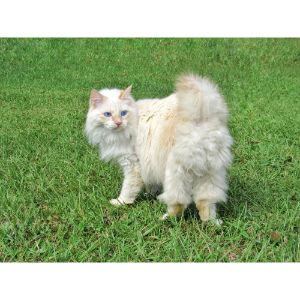
It is thought that the Japanese Bobtail started in China well over 1000 years ago and was brought to Japan as an emperor’s gift.
They arrived in the country for the first time in 1968, and the Cat Fanciers Association granted them championship status in 1976.
The breed possesses intelligence, affection, and personality. They don’t like being left alone and prefer households with other pets because they are very social and people-oriented.
They are available in a wide range of colors, including cream.
8. Maine Coon
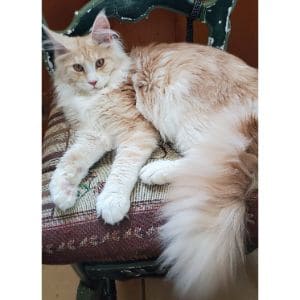
One of the most well-liked cat breeds in the US is the Maine Coon. This breed is renowned for its enormous size and gentle-giant disposition.
It originated in Maine and was developed to withstand the harsh northeastern winters. The Cat Fanciers Association awarded them championship status in 1950.
The Maine Coon makes excellent lap cats because it is calm, even-tempered, and friendly.
They certainly require more grooming than the normal cat, but they adapt well to homes with other pets. Maine Coons do exist in cream color variations, despite being incredibly rare.
9. Manx
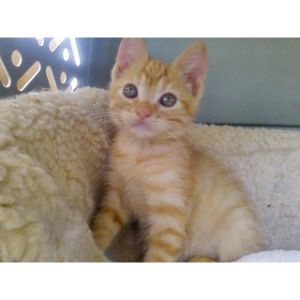
The Cat Fanciers Association and The International Cat Association recognized the Manx as a breed in 1906 and 1979, respectively.
Although some have short tails and a few have full-length tails, they are recognized by their distinctively short, bobbed tails.
This breed enjoys the company of others and thrives in social environments.
They are gregarious, very clever, and lively, in addition to being playful. Manx are typically described as a cat breed that resembles a dog more. They come in cream color variants.
10. Norwegian Forest Cat
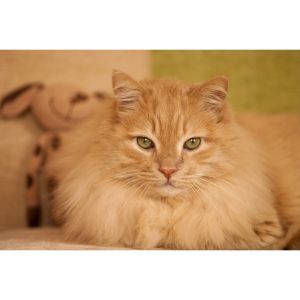
In 1994, the Cat Fanciers Association recognized the Norwegian Forest cat. These big cats have a thick, glossy, water-repellent topcoat and a thick, wooly undercoat designed for the chilly Norwegian winters.
The sociable, perceptive, and exuberant Norwegian Forest cat makes good family pets since they are people-oriented. In addition to many different colors, this breed is also available in cream-colored variants.
11. Oriental
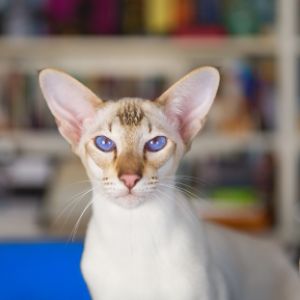
A Russian Blue and a Seal Point Siamese were crossed in 1950, and after many generations of selective breeding, the Oriental was born.
The Foreign Shorthair was its original name, but it was renamed towards the beginning of the 1970s. In 1977, they were granted championship status by the Cat Fanciers Association.
Orientals have a characteristic wedge-shaped skull, huge ears that are almond-shaped, a sleek, slender torso, and almond-shaped eyes.
This breed tends to talk a lot and is very lively and enthusiastic. In addition to many different coat colors, you may find them in cream-color versions.
12. Persian
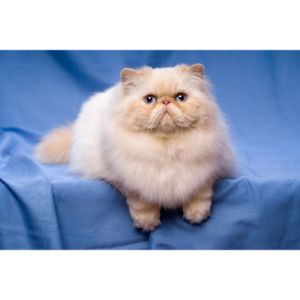
Persian cats were first introduced to Europe in the fourteenth century, and in 1871, the Crystal Palace in London hosted its first cat show.
They are distinguished by their flat features and thick, flowing coats. The breed comes in a variety of colors, including cream.
They are a kind breed that does best in more calm environments. Despite significant health issues, they are among the breeds of cats with some of the longest lifespans.
13. Ragdoll
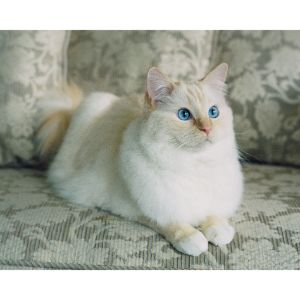
In the 1960s, a Persian breeder from Riverside, California, created the Ragdoll by mating a stray domestic longhaired cat with one of her Persians.
The Ragdoll breed was created through selective breeding techniques for its distinct appearance and disposition.
Except for the Cat Fanciers Association, they have achieved championship status in all-breed organizations.
The Ragdoll breed fits well with various home settings, including those with several pets.
Their medium-to-long coat is as soft as a rabbit’s fur. They feature points like Siamese cats and are available in several colors, including cream.
14. Sphynx
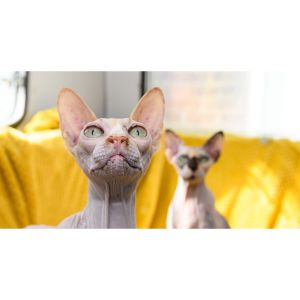
If the word “Sphynx” caused you to halt briefly, let us clarify.
The Sphynx does come in a cream variation. However, it’s not the first thing that springs to mind if you’re searching for a cat that’s blond in color; they lack fur.
A natural genetic mutation caused the Sphynx to be hairless, and because of their distinctive appearance, they swiftly rose to the top of the list of cat breeds in popularity.
Ultimately, the Cat Fanciers Association awarded them championship status in 2002. This breed is not for you if you prefer a cat with cream-colored fur, but the Sphynx may be the right choice if you don’t mind a bald blond.
15. Turkish Angora
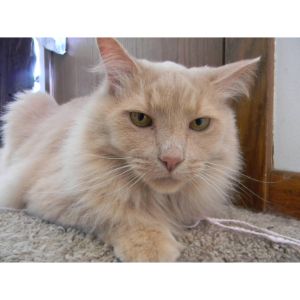
The Turkish Angora, a centuries-old breed, came to the United States for the first time in 1963 and was later awarded championship status by the Cat Fanciers Association in 1972.
This breed is pleasant to people, clever, athletic, and extroverted. They adore being in high places, even riding on their shoulders.
The Turkish Angora thrives in homes with other pets, including dogs.
They have medium-length, silky coat and velvety tail that resembles a fox. The breed is available in various colors, including cream versions, and has no undercoat.
Common Medical Issues That Blond Cats Experience
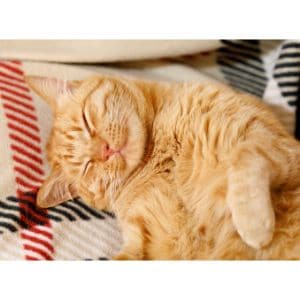
Blond cats are more likely to have several skin diseases, such as:
1. Solar Dermatitis
Skin conditions like solar dermatitis can develop into skin cancer. Lighter-colored cats are more prone to the condition brought on by exposure to the sun.
Skin redness, scaling, ulceration, scabbing, and crusting are all symptoms. Since the cat’s face and ears receive the least UV protection, these symptoms frequently appear there.
Cats should be kept inside during the hottest parts of the day, and UV-blocking film should be applied to windows to protect them from solar dermatitis.
2. Skin cancer
Light-furred cats are more susceptible to developing skin cancer. This is because sun exposure frequently causes skin cancer.
Bringing cats inside or keeping them in the shade during the hottest days is best.
Sunscreen can also be applied to their skin if it becomes necessary. Red, crusty patches of skin, lumps, scabs, ulcers, and lesions are all signs of skin cancer.
Since the ears and nose have little hair protecting them, skin cancer is frequently observed there. The majority of feline skin malignancies are treatable and curable.
Frequently Asked Questions
What is the rarest cat color?
The rarest cat color is albino. Two recessive genes have to be present in both parents for this to happen.
What color of cat is the least popular?
Black cats are considered to be the least popular since they are associated with witches and Halloween. But these cats are no different than any other cat in behavior.
What is a tabico cat?
A tabico cat is a cat that is a combination of brown tabby and calico. These cats have brown and orange markings and large patches of white fur.
So What Are the Most Interesting Blond Cat Breeds?
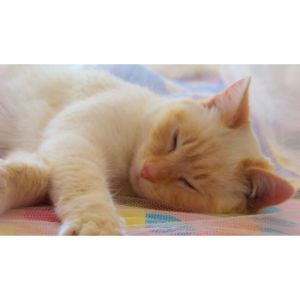
The word “blond” is not commonly used in purebred cats, but certain cream color types undoubtedly suit the bill.
Even though many breeds have the coveted cream coat variant, this is a generally uncommon color variation.
It is strongly advised that you contact a respected breeder of the breed of your choice and inquire about cream-colored cats if you are looking for a specific breed in that color.
You might find yourself having to travel or even having to wait on a kitten waiting list. It’s also possible to look for a cream-colored cat at local rescues and shelters.
If you find this guide, “Interesting Blond Cat Breeds,” informative and helpful, you can check out these other cat-related articles from our team:
You can learn more about cats by watching “The CUTEST CAT BREEDS In The World 🐱” down below:




